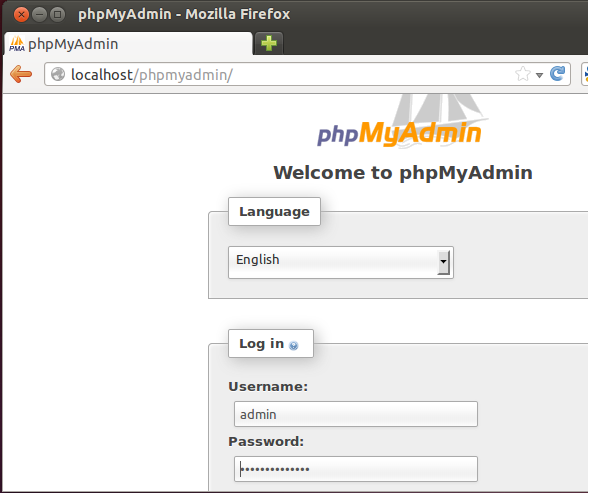
#Phpmyadmin not found ubuntu download#
If none of the above solutions work, you can try downloading and extracting the phpMyAdmin package manually.įirst, download the package from the official website. Next, add the following line to the file: Include /etc/phpmyadmin/nfįinally, save the file and exit the editor, then restart Apache: sudo service apache2 restart Solution 4: Download and Extract phpMyAdmin Package The vim command is used to open the specified file in the Vim text editor. If the above solutions don’t work, you can try adding a line to the Apache configuration file.įirst, open the file: sudo vim /etc/apache2/nf Then, restart Apache: sudo service apache2 restart Solution 3: Editing Apache Configuration File The /usr/share/phpmyadmin is the source file and /var/www/html/phpmyadmin is the link. sudo ln -s /usr/share/phpmyadmin /var/www/html/phpmyadmin If the first solution doesn’t work, you can try creating a symbolic link in the web root directory. Solution 2: Creating a Symbolic Link in the Web Root In this case, it’s used to restart the Apache server. The service command is used to run a System V init script. The a2enconf command is used to enable the specified configuration file within the Apache server.įinally, restart Apache: sudo service apache2 restart Next, enable the configuration file: sudo a2enconf nf The /etc/phpmyadmin/nf is the source file and /etc/apache2/conf-available/nf is the link. The ln -s command creates a symbolic link. sudo ln -s /etc/phpmyadmin/nf /etc/apache2/conf-available/nf In this case, we will create a symlink to the phpMyAdmin configuration file in the Apache configuration directory. Solution 1: Creating a Symbolic LinkĪ symbolic link, or symlink, is a type of file that points to another file or directory. This is a common issue that can occur due to various reasons such as incorrect Apache configuration or missing symbolic links. When you try to access it through your web browser, you might get an error message saying “phpMyAdmin not found”.

The ProblemĪfter upgrading your PHP and Apache, you may find that your phpMyAdmin is no longer accessible. It can perform various tasks such as managing databases, tables, columns, relations, indexes, users, permissions, and so on.
#Phpmyadmin not found ubuntu free#
PhpMyAdmin is a free and open-source tool written in PHP intended to handle the administration of MySQL or MariaDB with the use of a web browser.

Solution 4: Download and Extract phpMyAdmin Package.Solution 3: Editing Apache Configuration File.Solution 2: Creating a Symbolic Link in the Web Root.


 0 kommentar(er)
0 kommentar(er)
